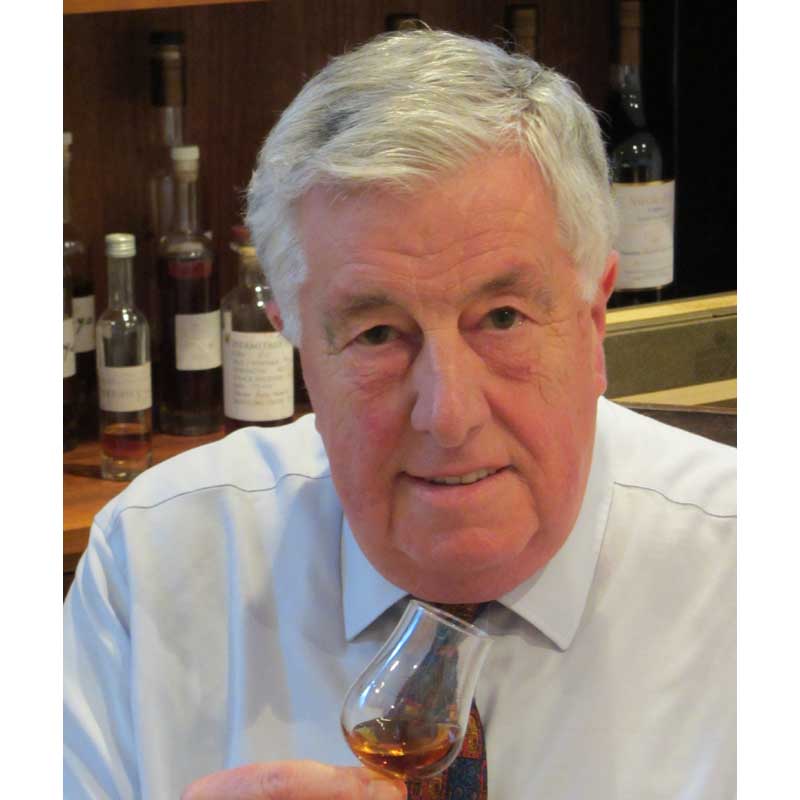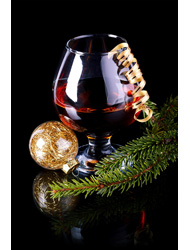Category: Learning about Brandy

Brandy Bottles
Glass containers and bottles are believed to have first been made around 1500 BC but serious use of containers made out of glass probably did not occur until around 100 BC. More practical applications for glass were established with the advent of glass blowing, probably around a thousand years later. Modern glass bottles are made in commercial moulds and most bottles that contain alcoholic beverages, including brandy bottles, are made of clear glass. That however has not always been the case. The traditional brandy bottle started life as a green or, as in the case of cognac, black glass container. The… Read more

English Grape Brandy
Chapel Down, the highly successful English wine producer, has just released a 23-Year-Old Grape Brandy made from grapes grown in Kent. The spirit was distilled in 1992 and then aged in French oak. According to one spirits writer it has “all the hallmarks of a complex armagnac or calvados but with its own personality”. By definition brandy is a spirit made from a fruit. Just like Chapel Down, armagnac and cognac are brandies made from grapes but they each have to be made under very strict conditions. Most importantly the grapes must be grown in one of the designated cru… Read more
Amazon’s Sommelier by Phone Service
Online retailer, Amazon, has just launched a new Sommelier By Phone Service in Japan. Prospective purchasers can leave their phone number on the purchasing page of a specific bottle; they will then be telephoned by a sommelier who will answer questions and advise on flavour and alternatives; more information will follow by e mail. Another great innovation by Amazon – or is it? Here at Brandyclassics we have been offering this service since our inception, a quarter of a century ago. Always happy to talk and advise about our handpicked products by phone or email, we think our experience and expertise… Read more

David on Technical Topics – Pineau
Many of us travel to France in the summer holidays and diligently search out local products which are unique to the area we are visiting and Pineau des Charentes, with its rich and often sweet properties, is perhaps the one which interests us most. We ask “what is it?” and the answer “Pineau” does nothing to reassure us. We ask, “is it a wine or a brandy?”, ”is it like a sherry or a port?” and the answer still comes back, “Pineau”! Pineau is unique as indeed sherry or port are in their respective countries. It is a combination of… Read more

David on Technical Topics – The Traditional Christmas Spirit
Brandy has been the traditional spirit of Christmas since the sixteenth century and was immortalised by Dickens in Mrs Cratchit’s Christmas pudding, “blazing in half of half a quarter of ignited brandy”. But it is said that cognac was recognised in 1540 after a Chevalier du Maron took two casks of newly reduced or distilled wine to a local monastery near La Rochelle. The monks tasted one of them and found it to be fiery and tasteless so left the other cask unopened. Many years later they found the unopened cask, the contents of which had matured and were very… Read more
David on Technical Topics – Cognac Distillation, The Wine Reduction
Cognac Distillation – The Wine Reduction In the 16th and 17th centuries, the brandies produced in the Charente were reduced by distillation as this made them easier to ship abroad. The risk of low alcohol wines going off before they reached their destination was avoided and the intention was to cut them back with water before they were consumed. But the Cognaçaise soon found that keeping the strong wines in barrels changed them for the better and so they started to learn the skills of distillation. The basic concept of distillation is that you boil the wines, collect the vapours… Read more
David on Technical Topics – Cognac Distillation, The Still
The cognac distillation process is the most technical part of making the golden nectar. It is the stage where the wine is reduced to a spirit, which we refer to as ‘eau de vie’. Distillation is carried out twice. The first time it changes the wine to a ‘brouillis’, a cloudy liquid with a strength of around 27 – 30% alcohol, and then it is distilled again. In this article we will consider the distillation equipment required and next month we will explore the process. The complete distillation process is controlled by the Bureau National Interprofessionel du Cognac (BNIC) and… Read more

Pineau is the taste of summer
Sitting outside on a warm, balmy evening is the perfect time to try Pineau des Charentes. Made in the cognac producing region of France, newly distilled eau de vie is mixed with grape juice before being aged. The result is a wonderfully fresh, fruity flavour and with an abv of 17 – 18%, it is perfect for every occasion. Serve cold as an aperitif, or a dessert wine, or if you’re looking for a longer drink, it is the ideal base for a summer cocktail – try our Pineau Royale recipe for something truly sumptuous. Most of our wonderful selection… Read more

Old Brandy Bottle Valuation Service
We are pleased to announce the introduction of our new Valuation Service. In response to an increasing number of requests for Old Brandy Bottle Valuations we have formalised the service that we offer. If you would like to know more about the history and value of an old bottle of brandy, just send us the information requested on our Valuation Service page. You will then receive an indication of its worth – over or under £250 – and whether or not a detailed, historical valuation is recommended. If the latter is required you will be able to purchase your Valuation… Read more

David on Technical Topics – How Long Does a Bottle of Cognac Last?
It is surprising how many times we are asked this question. The answer is, of course, completely different from wine, as the distillation process reduces it to a spirit. There is nothing in cognac which can effectively reduce its life providing air cannot get into the bottle and of course, the spirit cannot get out. Cognac bottles are sealed with a cork and a metal or plastic cap shrunk over the top. On some more expensive bottles a wax seal is used to ensure that the bottle is airtight. Once a bottle has been opened, the level of cognac becomes significant. The more air that is in the… Read more
